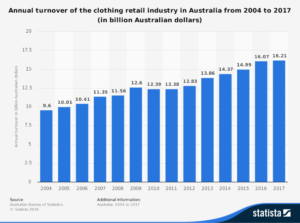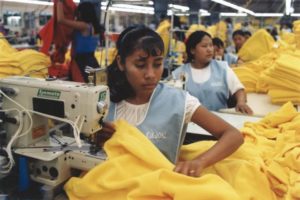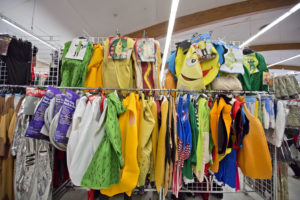Fast fashion children’s clothes are harming our environment and our kids.

With their rapidly growing bodies, children can go through clothes quicker than any shopaholic.
Every year, 85% of textiles bought in Australia ends up in landfill. A key contributor? Children’s clothing.
A majority of these clothes are made in a process called Fast Fashion, the rapid production of garments by mass-market retailers.
Although affordable, this process is why Australians are consuming 400% more than they were two decades ago. Fast Fashion poses numerous problems to the natural environment and those living within, mainly because of the materials used in development.
Fast Fashion poses numerous problems to the natural environment and those living within, mainly because of the materials used in development.
Synthetic fabrics such as polyester, nylon and acrylic are commonly used to make children’s clothes. These materials take up to 1,000 years to biodegrade and release microplastic fibres into the ocean when washed.
Marine animals consume these plastics and inevitably pass it up the food chain until the cycle leads back to us, effecting our bodies.
Currently, there are 5.25 trillion pieces of microplastics littering the ocean – more than all the stars in the galaxy!
Because of the cheap fabric, another issue with these garments is that they break down quicker than ethical clothing and are dangerous to make. On top of poorly paid wages, the workers who create the affordable clothing are also exposed to dangerous elements.

During production, synthetic garments are treated with multiple toxic chemicals that are not only harmful to the health of workers but also to the children who wear the garments.
Chances are that that five-dollar child’s t-shirt, actually has a much greater, untold cost.
Plus, these poisonous chemicals rapidly increase the amount of Co2 in the air. With levels already exceeding safe human operating space by 20 per cent, it poses a significant problem.
But it’s not too late for change. There are many simple adjustments one can take to prevent these issues and benefit their children.
1. Buy Sustainable Children’s Clothes.
Unlike fast-fashion garments, eco-friendly clothes are made from better quality materials (organic cotton) and they don’t contain toxic chemicals. Instead, the fabrics are naturally made and sourced.
Below is a list of a few stores you can check out for worthy and sustainable kids’ clothes:



2. Read The Label.
A simple solution to ensure you are getting good quality and non-harmful fabrics, is to check the label for what materials are used. You should stay clear of textiles like cotton, synthetic materials and animal fur and instead opt for natural fabrics such as organic cotton, linen, hemp and recycled fibre.
3. Buy Second-Hand Clothing.

Without adding to the production of garments, second-hand clothes are a great alternative to buying new clothes and they cost a fraction of the price. Additionally, they also provide a great place to recycle outgrown children’s clothes.
4. Be Mindful of How You Wash and Dry.
The way you clean clothes can reduce water usage and the risk to us.
The average household does 400 loads of laundry every year. You can reduce energy consumption by 90 per cent by simply doing full loads and using cold water only.
A great addition to reduce the amount of microplastics released when you wash clothes is a microfiber-catching laundry ball. Washing one cotton t-shirt releases almost 2,000 microplastic fibres but the laundry ball can slash this risk.







